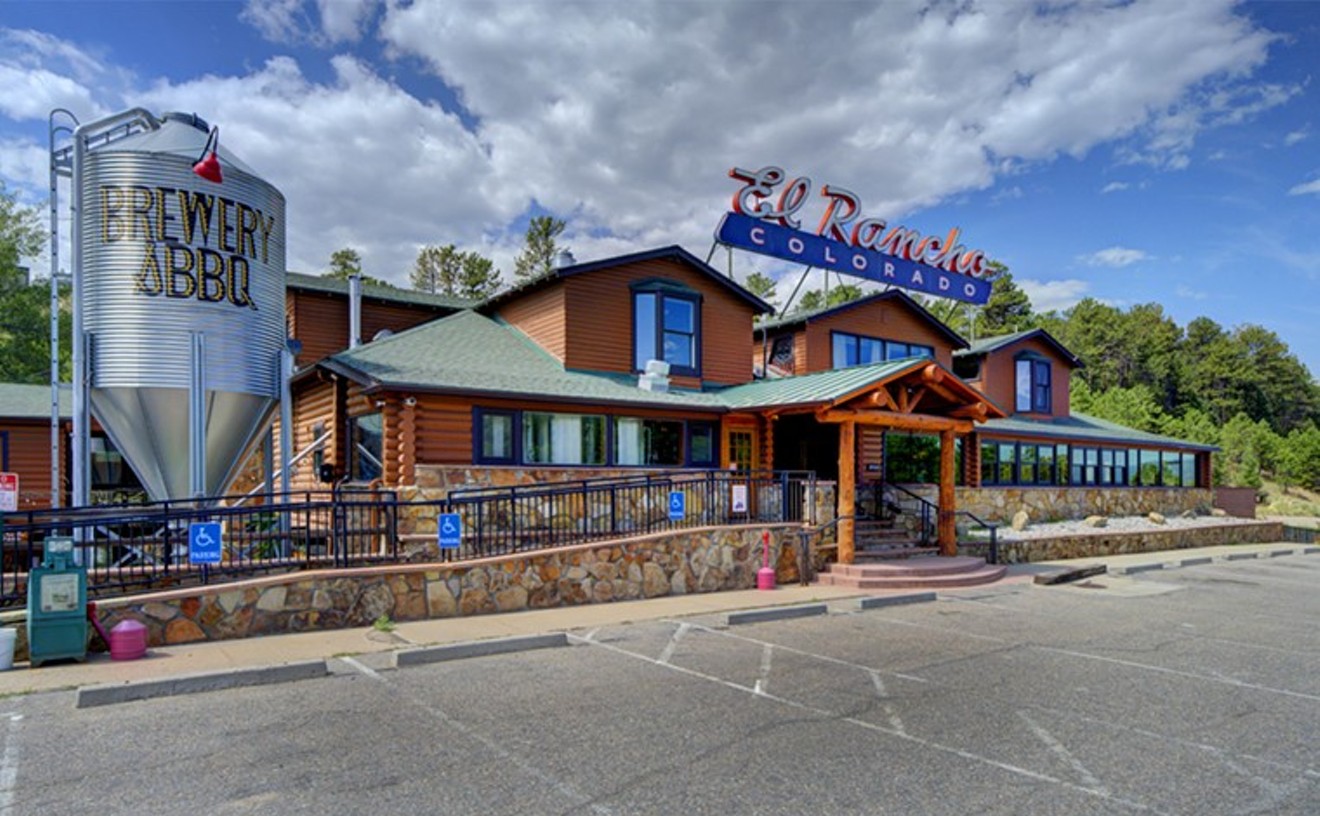Last year, Messina listed the property he'd bought at 601 East Colfax Avenue for $800,000 back in 2004 for sale at $4.8 million. Potentially justifying that high price tag was a May 3 filing for a certificate of non-historic status from Denver’s Landmark Preservation Commission; if granted, it would make it much easier to demolish the building and construct an eight-story apartment building with over 100 units on the property, as the would-be buyers who filed for that designation would like to do.
What today is Tom's Diner was originally part of the homegrown White Spot chain founded by William "Fred" Clements and later run by his son Tony. This particular location was built in 1967 according to a design by Armet & Davis, a Los Angeles architecture firm that specialized in the futuristic style known as "Googie," after the circa 1949 Googies coffee shop in L.A.
After the application for non-historic status was filed, the landmark commission staff studied the building and its history, and offered some particularly tasty tidbits in its summary:
The diner at 601 E. Colfax has been witness to dramatic changes along Colfax Ave. from the postwar boom of the 1960s to a decline in the 1980s to the revitalization and redevelopment of today, continuing to operate as a 24-hour diner throughout. In August 1969, the White Spot at 601 E. Colfax was picketed by Denver hippies after several hippies were refused service. According to the manager, they were turned away because “the majority of other customers found them objectionable.” This followed a court decision earlier in the month that upheld a restaurant’s right to refuse service as long as it was not based on race or color. This case was based on the denial of service to hippies at another White Spot on Broadway. Said the judge, “no one would want to eat dinner in an atmosphere of barefooted, semi-dressed, disheveled, unwashed people, who throw food about at each other and on the floor and who generally conduct themselves in an atmosphere not conducive to comfortable, restful, relaxed eating.”At one point there were nine White Spots in metro Denver; the last one, at 800 Broadway, closed in 2001.
In 1982, the Denver Post described the White Spot at 601 E. Colfax as a favorite haunt of Denver’s vice detectives. The diner provided “a box seat for the rough ’n’ tumble action of Denver’s notorious east-west strip. Here, over a greasy omelet and cup of lukewarm coffee, the streetwise people-watcher can take in the parade of characters waltzing by the window.” Tony Clements said he was glad to close the White Spot location at 601 E. Colfax in the mid-1980s: "Like running a restaurant in Beirut," he says. "In the ’60s, it was pot and hippies and all that, but we managed. But when the neighborhood went to heroin and crack, that was too much. I got out."
Three of the former White Spot locations continue to operate as restaurants: the Denver Diner, at 740 West Colfax; Sam’s No. 3, at 1500 Curtis Street; and Tom's, which was declared officially eligible for the National Register of Historic Places in September 2009.
And now it looks like Denver might be asked to declare it a landmark, too. The initial deadline for the city to issue the certificate of non-historic status was Friday, June 7, but that has been pushed back a week because "Landmark Preservation has received a notice of intent to file an application for landmark designation," the office reports.
While the actual application for historic designation has not yet been received at the office, if one is submitted (it would be considered a "hostile" application, since it would be submitted without the owner's consent), there's a good chance that Tom's Diner could become the battleground for the kind of historic fight seen a few years ago over the Anderson home in Jefferson Park.
While that structure was demolished, the landmark commission report notes that Tom's Diner could be eligible for landmark designation in all three categories it studied: history, architecture and geography.
Kaye Taavialma is heading the effort to save Tom's Diner. On June 8, she launched a gofundme campaign to raise the $875 necessary to file a landmark application. (The fee is $250 for an individual structure if the applicant has the owner's consent.) If you can't afford to make a financial contribution, she's accepting memories of Tom's Diner, too.
And there are plenty out there.
Update: This story has been updated to include the gofundme campaign.













